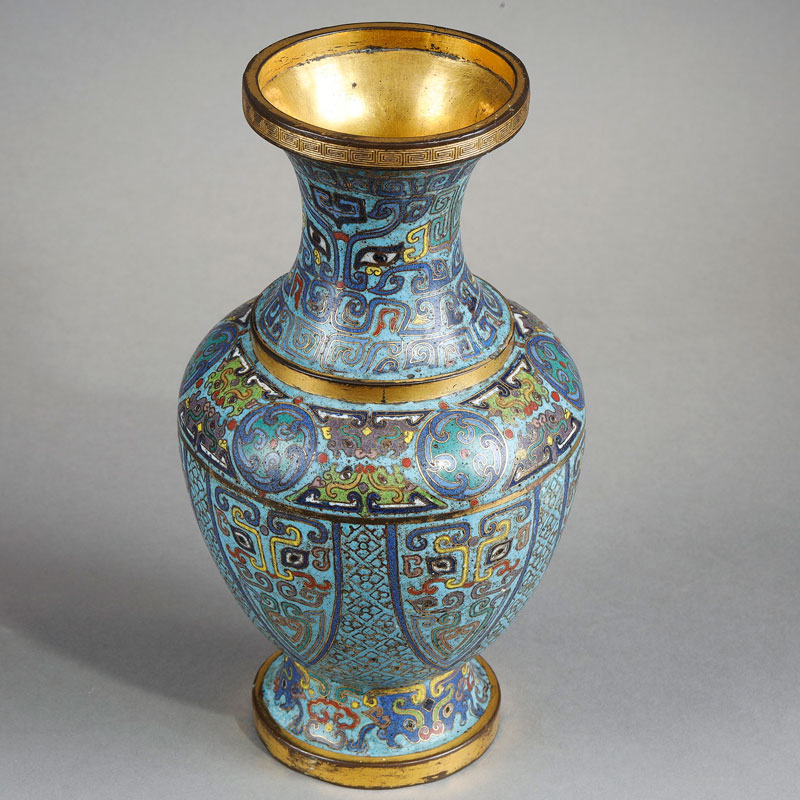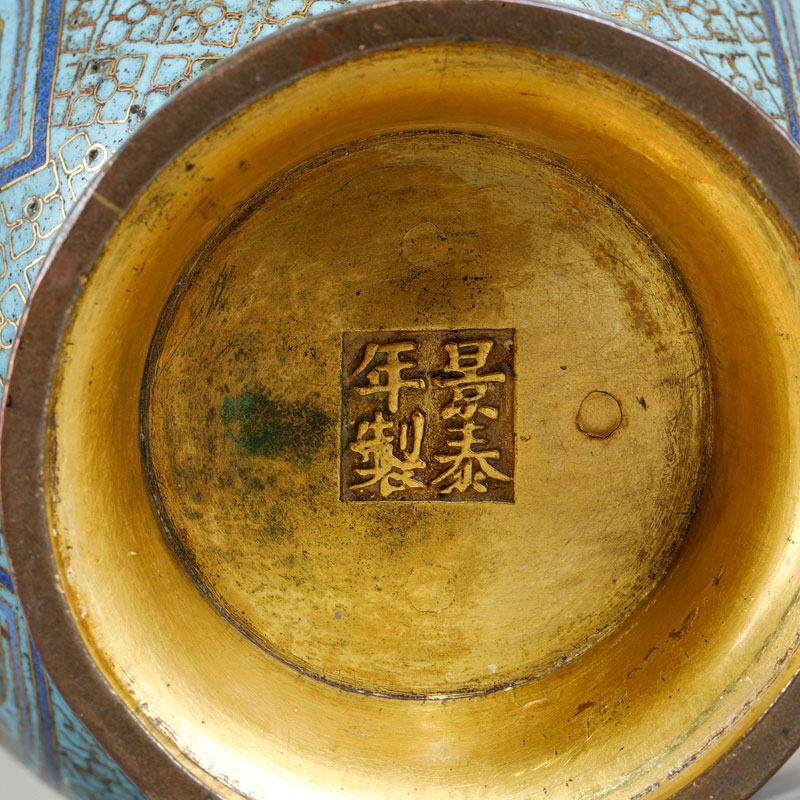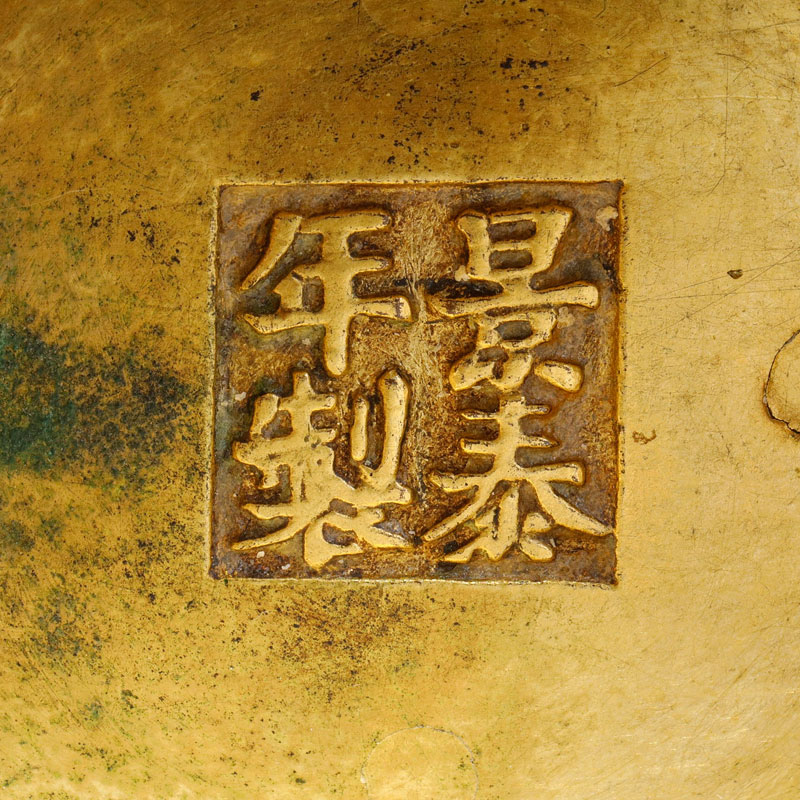Imperial baluster vase in cloisonné enamels with archaistic decoration marked Jingtai
- Cloisonné enamels
Description
This baluster-shaped cloisonné enamel vase rests on a circular foot. It is decorated with Taotie masks and archaistic scrolls on its body, foot, and flared neck. The middle of the vase is enhanced with alternating medallions featuring taotie masks. The upper rim is accentuated with an incised Greek frieze on gilded metal. The base bears an apocryphal Jingtai mark enclosed in a square.
The Jingtai period (1450-1457) is considered a pinnacle of cloisonné art in China, which is why many Qianlong-era cloisonnés carry an apocryphal mark. The taotie mask is an archaic symbol found on Neolithic jades and ritual bronzes from the Shang Dynasty (1700-1050 BCE). It represents a legendary gluttonous figure that devours evil spirits. This cloisonné is emblematic of the archaistic style trend during the reign of Qianlong. The baluster vase shape is characteristic of contemporary porcelain and cloisonné pieces from the Qianlong period.
Reference :
On apocryphal Jingtai marks : Béatrice Quette, Cloisonne – Chinese Enamels from the Ming and Qing Dynasties, Musée des Arts Décoratifs, Paris, Yale University Press, 2011, p. 155
Imperial baluster vase in cloisonné enamels with archaistic decoration marked Jingtai
- Cloisonné enamels
Discover more Cloisonné and enamel
Return to the collection
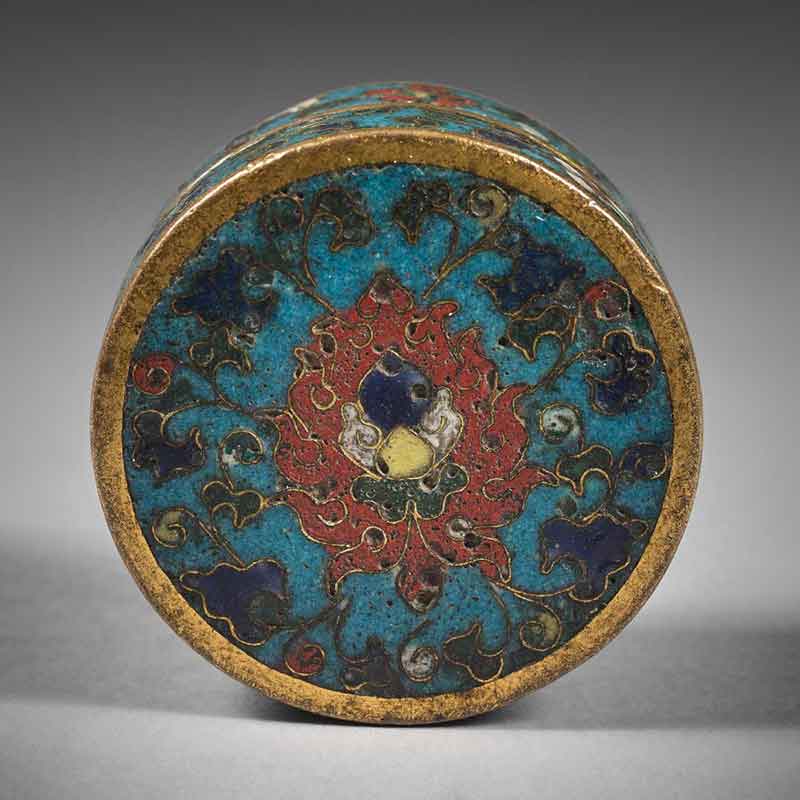
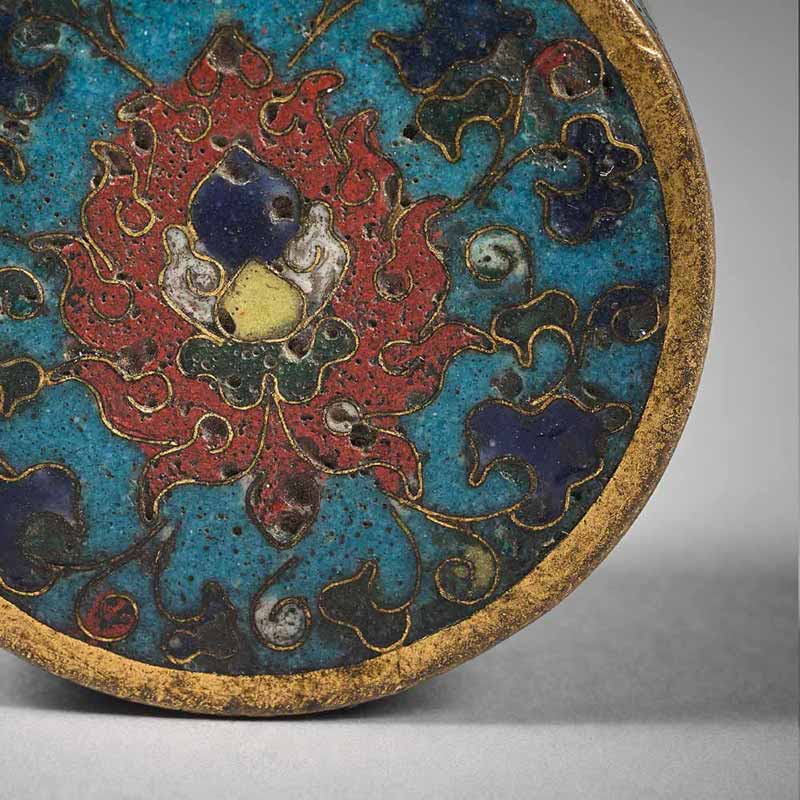
A rare small round box with lotus and floral scrolls on a turquoise ground

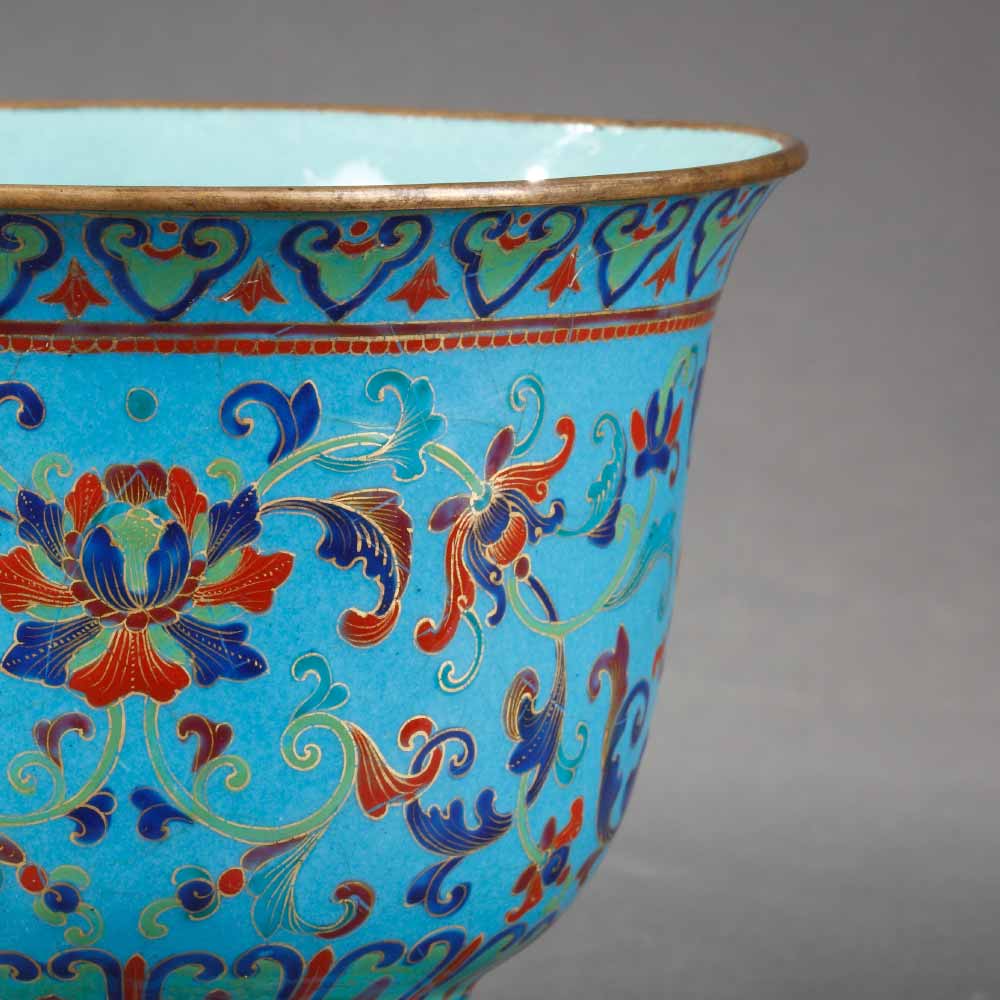
Small painted enamel cooler decorated with floral scrolls


An arrow-vase (touhu) decorated with small flowers and scrolls on turquoise ground
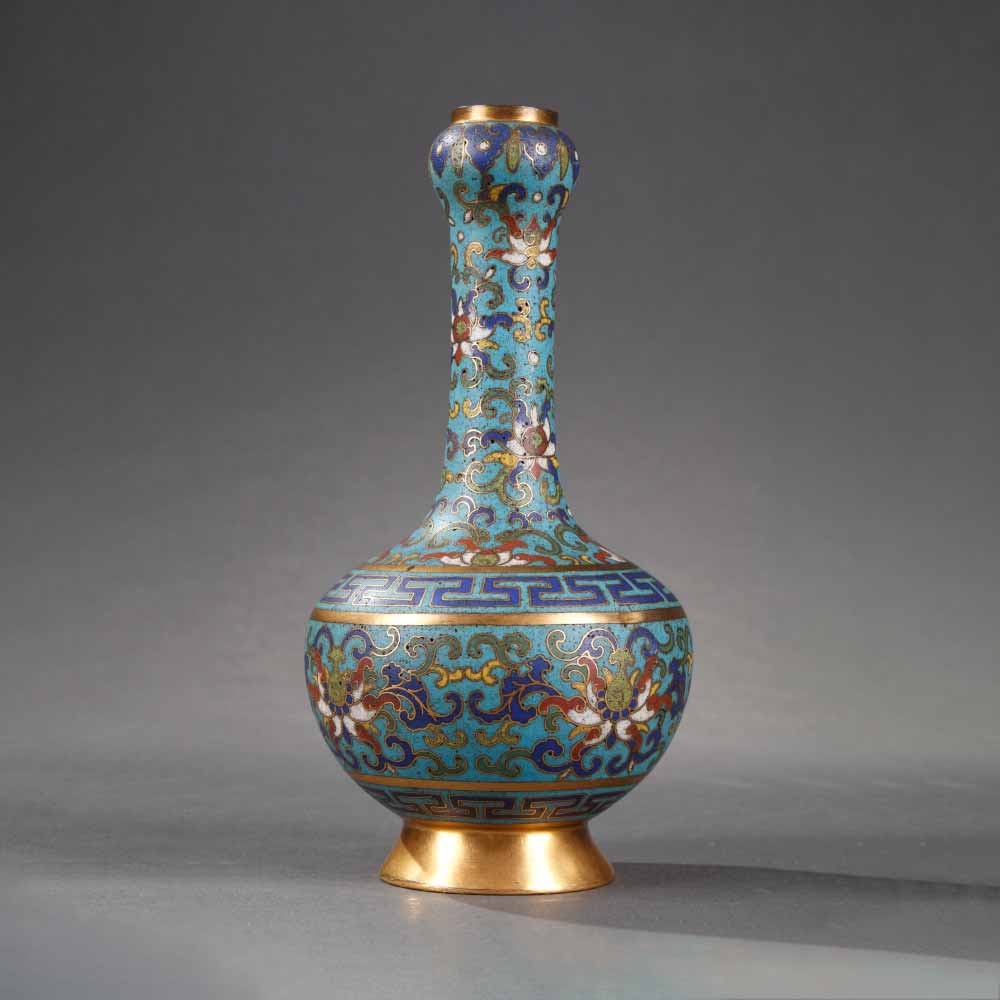
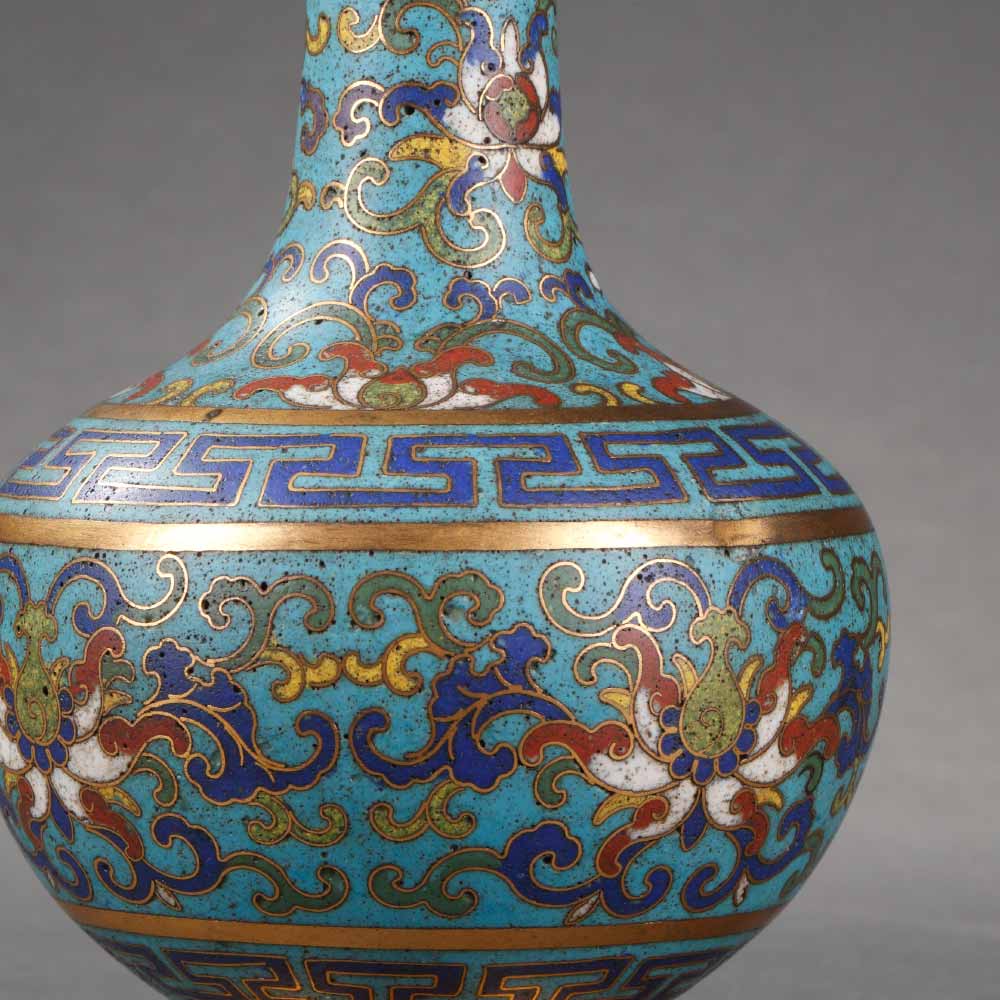
A suantou bottle vase decorated with floral scrolls












